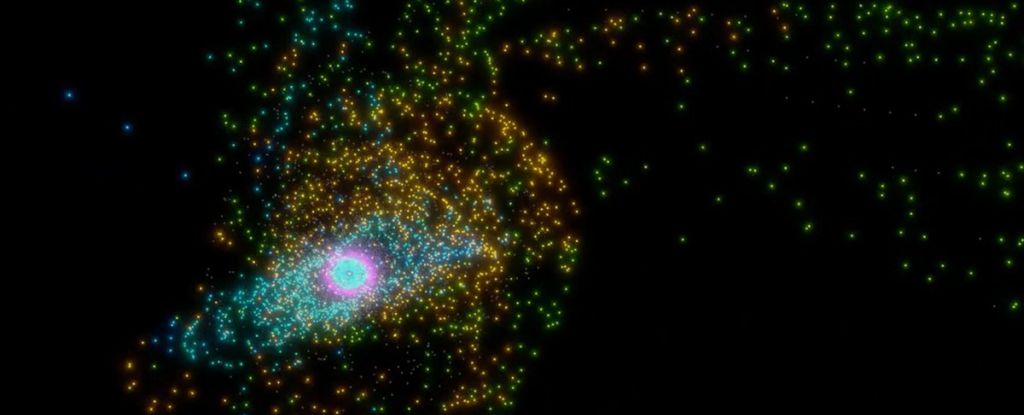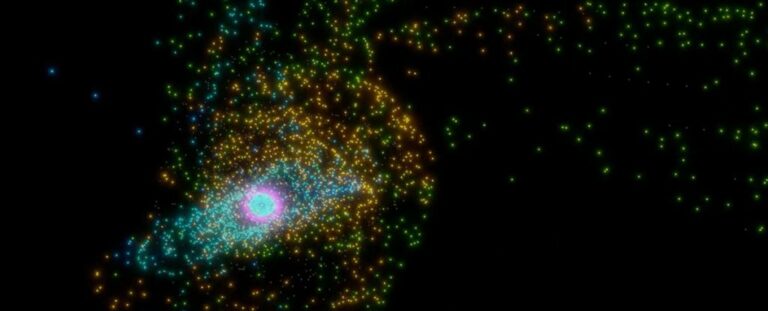New Simulations Hint That Planet Nine May Not Be a Planet After All
In the distant reaches of the Solar System, far from the Sun’s light and warmth, things can become quite puzzling.

Clusters of rocky bodies there have been observed orbiting in unusual paths, which some astronomers have attributed to the potential existence of a large, unseen planet at the edge of our Solar System.
However, searches for this hypothetical Planet Nine have yet to uncover any such world. One possible explanation for this absence is that Planet Nine does not exist and never did.
But if there is no Planet Nine, what accounts for the strange orbits? A new study offers a potential answer: a passing star.
While this star is not present today, billions of years ago, a massive object could have come close enough to our Solar System to perturb the orbits of outer objects, resulting in their peculiar trajectories. Some of these objects might have even drifted closer to the Sun, becoming the unusual moons captured by the giant planets.
This hypothesis is proposed by a team of astrophysicists led by Susanne Pfalzner from Forschungszentrum Jülich in Germany. They conducted simulations to examine the effects of stars of varying masses and distances passing near the outer Solar System.
According to astrophysicist Amith Govind of Forschungszentrum Jülich, “The best fit for today’s outer Solar System in our simulations is a star slightly lighter than our Sun—about 0.8 solar masses. This star would have flown past our Sun at a distance of approximately 16.5 billion kilometers, roughly 110 times the distance between Earth and the Sun, and a little less than four times the distance to Neptune.”
Most objects in the Solar System orbit in a relatively flat, disk-shaped configuration. This arrangement is a remnant of the early Solar System’s formation; when the Sun was a young, spinning star around 4.6 billion years ago, material from the surrounding cloud swirled around it, forming a disk—much like how pizza dough flattens as it spins.
The material that didn’t become part of the Sun eventually formed the Solar System, including all the planets, asteroids, and moons. Since then, this disk has largely remained intact without major disruptions.
In contrast, the outer Solar System features numerous rocky bodies—trans-Neptunian objects (TNOs)—that orbit at highly inclined angles, some so steep that they almost circle the Sun’s poles rather than its equator.
There are scientists who state that some of these bodies have potentially unusual orbits because of a nearby planet which might be five to six times the size of the Earth. But the space, you think is empty is not empty in the way you comprehend it. Even though at the present time no stars are near the sun one can assume that there used to be more stars in the past. Stars as a rule are born in clusters in regions that provide much greater stellar density.
Pfalzner and her team performed more than three thousand simulations changing the size and distance of passing stars and compared their influence on the Solar System with presently known eccentric orbits of trans-Neptunian objects (TNOs). They found out that, with a star that is slightly smaller than the sun; in close proximity to the outer solar system, could suffice in bringing disruption that currently exists in the orbits of heavenly bodies.
This stellar flyby may also account for such strange shapes of addresses such as 2008 KV42 and 2011 KT19, which shares characteristics of the opposite direction of the planetary along with almost perpendicular inclinations. These objects are have been previously looked for while hunting for evidence of Planet Nine.
The simulations indicate that to the optimization of up to 7. Thus it has shown that a two percent segment of the original TNO population could have shifted inward, towards the sun.
“Some of these objects may perhaps have been accreted by the giant planets as moons,” says Dr Simon Portegies Zwart from Leiden University. ‘It could be the reason why there are so many different types of moons seen orbiting the outer planets’.
However, this study presents hypothesis that should not be mistaken for the concrete fact. There are several issues that may explain why the scientists have not yet detected the Planet Nine and they are, for instance, the faint object and the tremendous distance that separates it from Earth. Thus, current findings can be contingently influenced by such factors as equipment and selection bias.
Still, the concept of a stellar flyby offers a logical and rather smooth-sailing account.
The latter remark is made by Pfalzner who also explained the benefit of this model by stating that there is no frill in this model which strengthens this model. In turn, it provides a single answer for several open issues regarding our Solar System.
The research has been published in two papers, appearing in Nature Astronomy and The Astrophysical Journal Letters.
Do not forget to share your opinion with us to provide you with the best posts !




0 Comments